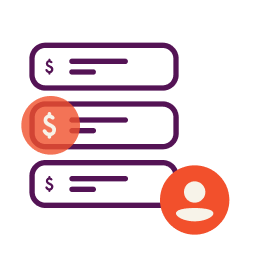- A break-even analysis is a financial analysis tool that can help business owners in important decision-making, such as at what point a new business or new product will be profitable.
- Knowing the break-even point (BEP) for your business can also help you find investors.
- It’s not difficult to calculate a break-even point for a small business, but you do have to know some key variables in terms of revenue and costs.
- Learn more about a business break-even analysis and how to calculate it for your business in this article by Nav’s experts.
What Is a Break-Even Analysis?
A break-even analysis is a metric that business owners and financial analysts use to determine at what point a product or service will make a profit, or break even. It’s a financial calculation using the product costs and startup costs to determine how much of a product they need to sell to make a certain profit margin. It helps business owners determine the sales price per unit of individual products or the selling price of their services. Many business owners use a break-even analysis to decide whether or not to sell multiple products or include additional products in their business plan.
A sales break-even analysis is also a way for startups and other companies to generate interest from investors, because it allows the investors to know at which point they’ll earn back the cost of their initial investment.
To calculate the break-even point of your business, you’ll need to know the total fixed costs and the contribution margin for each item you plan to sell.
What Is a Fixed Cost?
A fixed cost is the cost to provide a product or service that doesn’t fluctuate, no matter how much of that product or service is sold. These are costs that you can’t avoid paying as a business, so they need to be built into the cost of your product or service.
Some examples of fixed costs for your business include:
- Mortgage or rent
- Equipment costs, whether monthly or one-time
- Property taxes and business licenses
- Insurance payments
- Loan payments
The more fixed costs that a company has, the higher their break-even point will be.
What Is a Contribution Margin?
The contribution margin is how much profit you get from each unit after you subtract the variable costs required to make that unit. It helps you understand how much each additional unit will cost you to make, and how that may affect your sales revenue.
By calculating the contribution margin, you can also get the contribution margin ratio, which shows how much money you have available to cover fixed costs. The contribution margin ratio is calculated by taking total revenue and subtracting variable costs, then dividing by the revenue.
(Total revenue – Total variable costs)/Total revenue = Contribution margin ratio
The contribution margin ratio is expressed as a percentage. In an ideal world, your contribution margin ratio would be 100%, which would allow you to cover the fixed costs mentioned above and still make a good profit.
What Is a Variable Cost?
A variable cost changes based on how much of a product or service you put out. Usually variable costs go up when you produce more of an item and go down when you produce less. These can be referred to as “incremental costs” because they increase incrementally as you create more products.
Some examples of variable costs include:
- Payroll or labor costs
- Raw materials, including packaging
- Shipping
- Electricity, water, or gas bills
The term “semi-variable costs” refers to costs that go into production that may start out as fixed, but will become variable once you hit a certain level of production. For instance, electricity or other utility bills may be a fixed cost when you first start your business, but as you create more of a product, you may use more electricity and water than you did in the beginning. This would make utilities a semi-variable cost for your company.
What Is Price Per Unit?
The price per unit is a measure of how much it costs you to produce a single unit of whatever product you sell. It’s calculated by adding variable costs and fixed costs and dividing by the number of units produced.
(Variable costs + fixed costs)/Units produced
You can use this information to come up with a pricing strategy that will help you sell your product and make a net profit.
How to Calculate the Break-even Point
To calculate your business’s break-even point, you take your fixed costs and divide by your contribution margin.
Fixed costs/Contribution margin = Break-even point
The break-even calculation is a relatively simple formula, but because variable costs can be somewhat complicated, it can be easier to use a break-even point calculator like the one we share below. Many small businesses use a simple Excel spreadsheet to calculate their break-even point.
How Can the Break-even Point Help Your Business?
The break-even point is used by business owners to decide if a business idea is worth implementing, or how much work or sales will be required to make the product profitable. Knowing the break-even point of your product can help entrepreneurs decide a number of factors, such as how much of a product to produce or how to set their pricing. It helps you know how much of your sales dollars will have to go back into the business and production line, and how much you will need to increase sales volume or pricing to earn a profit.
Break-even sales are important to maintain a healthy cash flow. Understanding the break-even point for your company can help you calculate how much of your product or service you need to sell to earn revenue over the cost of the business. It’s considered a “margin of safety” for your business — if you make less than the break-even point, you’ll be losing money and may go out of business.
Free Break-even Point Calculator
The U.S. Small Business Administration (SBA) provides a free break-even point calculator which you can use for break-even analysis.
If you’re looking for financing for your business, such as small business loans or business credit cards, Nav can help. Using your company’s data, we help find financing that you’re most likely to qualify for. We can even help you learn how to establish business credit and other personalized insights to help you increase your qualifications for lenders. Use Nav to see your best options now.
This article was originally written on December 1, 2022 and updated on August 14, 2023.


Have at it! We'd love to hear from you and encourage a lively discussion among our users. Please help us keep our site clean and protect yourself. Refrain from posting overtly promotional content, and avoid disclosing personal information such as bank account or phone numbers.
Reviews Disclosure: The responses below are not provided or commissioned by the credit card, financing and service companies that appear on this site. Responses have not been reviewed, approved or otherwise endorsed by the credit card, financing and service companies and it is not their responsibility to ensure all posts and/or questions are answered.